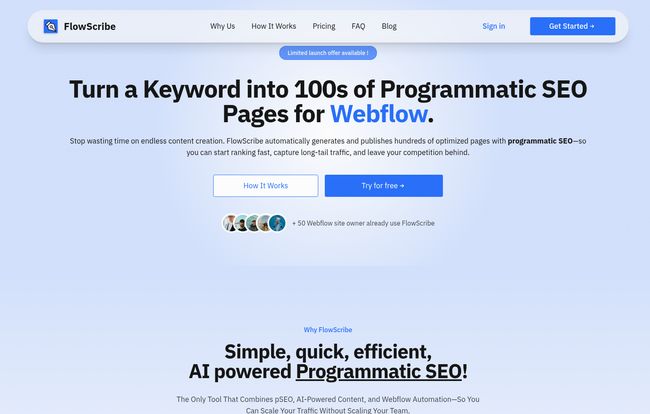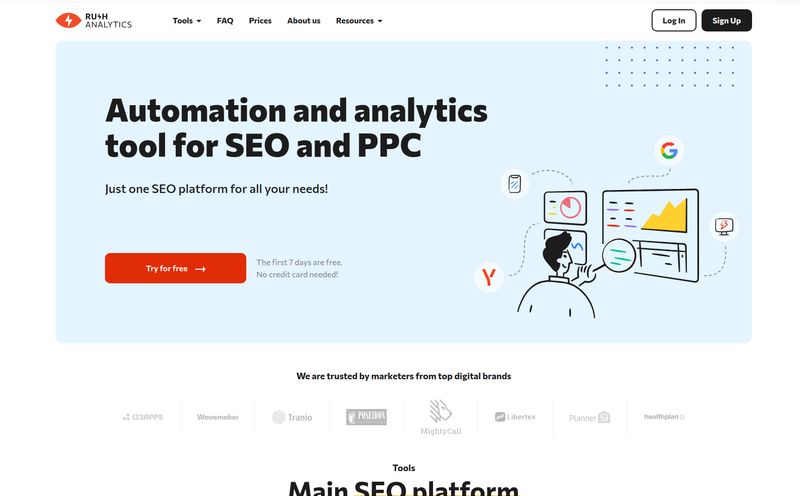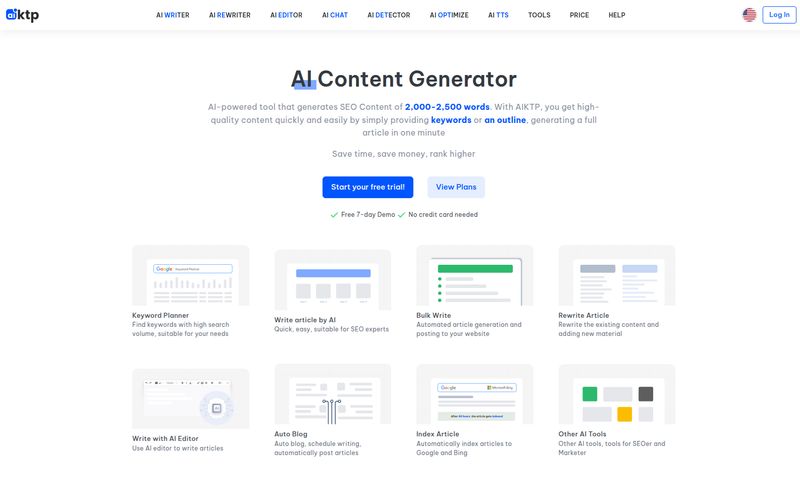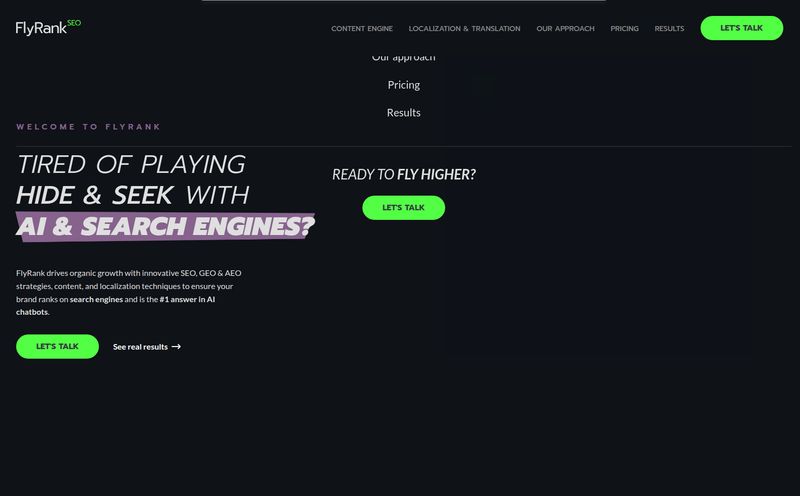Just you and me. How’s your content calendar looking? Packed? A little too packed? I know the feeling. You spend weeks, maybe months, painstakingly writing blog posts, targeting those big, juicy keywords. And for what? To get drowned out by the big players who have entire content teams.
It’s the classic SEO hamster wheel. We've all been on it. The constant need for more. More content, more pages, more keywords. Especially when it comes to capturing that sweet, sweet long-tail traffic—those super-specific search queries that convert like crazy but are a nightmare to create content for at scale.
For years, the answer has been whispered in certain circles: programmatic SEO. But for many, especially those of us who love the design freedom of Webflow, it’s always felt a bit… out of reach. Too technical. Too clunky. Requiring a developer on speed dial and a spreadsheet that could make a grown data-scientist weep. So when I heard about a tool called FlowScribe, which promised programmatic SEO specifically for Webflow, my first thought was, “Yeah, right.” But my second thought was, “Okay, I’m listening.”
So What is Programmatic SEO Anyway?
Before we go any further, lets clear the air. When people hear “programmatic SEO” or “pSEO,” their minds often jump to low-quality, spammy, auto-generated pages. And look, in the wrong hands, it can be. But that’s not what we’re talking about here.
Think of it less like a robot churning out gibberish and more like a master chef prepping ingredients. You have a core recipe (a template) and a set of high-quality, variable ingredients (data points like locations, services, or product types). Good pSEO combines these to create hundreds of unique, valuable, and highly-targeted pages. It’s how companies like Zillow create a page for every neighborhood, and how Zapier has a landing page for every possible integration. It's not magic; it’s just smart automation.
Enter FlowScribe: The Webflow-First pSEO Engine
This brings us back to FlowScribe. The landing page says it all: “Turn a Keyword into 100s of Programmatic SEO Pages for Webflow.” Bold claim. But what really hooked me is that it’s not trying to be a Swiss Army knife. It’s a scalpel, designed for one specific platform: Webflow.
It combines three powerful ideas: the scale of programmatic SEO, the intelligence of modern AI content creation, and the simplicity of Webflow automation. The whole point is to let you, the marketer or business owner, scale your traffic without having to scale your team. A concept I can definitely get behind.

Visit FlowScribe
How This Thing Actually Works
Okay, so how does it go from a single keyword to a flood of new, ranking pages? The process they lay out is refreshingly simple. Almost too simple, if you ask a jaded SEO like me.
- Connect Your Webflow Site: This is the first magic trick. You connect your Webflow CMS directly. No janky APIs, no exporting/importing CSVs. It just… connects. It feels native, which is a huge plus.
- Enter Your Keywords: You can bring your own list of long-tail keywords or use their AI to generate ideas. You feed it a main keyword, and it helps you find all the variations you could target.
- Generate & Publish: This is where the AI kicks in. FlowScribe generates the content for each page—titles, meta descriptions, body copy—and pushes it all directly into your Webflow CMS collection. You can then publish them all with a single click. From inside their platform. Let that sink in.
- Rank: They claim you can start seeing ranking improvements in days, not months. For long-tail keywords, that's actually believeable. You're not trying to rank for "car insurance," you're ranking for "classic car insurance for a 1967 Ford Mustang in Austin Texas." Much less competition.
The Features That Made Me Look Twice
Plenty of tools have fancy features. But a few of FlowScribe's really stood out to me as solving real-world problems for Webflow users.
Built for Webflow, and Only Webflow
This isn't a WordPress plugin that was awkwardly ported over. It’s designed from the ground up for Webflow. Why does this matter? Because it inherits your site's existing styles, fonts, and design. The pages it creates look like your pages, not some generic, cookie-cutter template. There's no need to hire a developer to make it all look right. That alone is a massive win.
AI That Cares About E-E-A-T
AI content is everywhere, and frankly, most of it is dreadful. It's generic, soulless, and Google is getting better at spotting it. FlowScribe claims its AI is optimized for Google’s E-E-A-T (Experience, Expertise, Authoritativeness, and Trustworthiness) guidelines. While any AI needs a human hand for true 'experience,' building a model with these principles in mind is a huge step in the right direction. It suggests they're focused on creating genuinely helpful content, not just keyword-stuffed fluff.
No-Code and No-Nonsense
The biggest barrier to pSEO has always been the technical side. FlowScribe removes it. If you can manage a Webflow CMS collection, you can use this tool. This opens up a powerful SEO strategy to solopreneurs, small agencies, and marketers who don't have a dev team on standby.
My Honest Take: The Good and The... Realities
Alright, let's cut to the chase. No tool is perfect. Here's my unfiltered breakdown.
What I Really Liked
The speed and efficiency are undeniable. The idea of going from concept to hundreds of live, optimized pages in an afternoon is just... wow. It’s a force multiplier. I was particularly impressed by the testimonials. When a Website Owner like John says, "I'm blown away by FlowScribe! The ease with which it creates hundreds of optimized pages is phenomenal," it resonates. That's the core promise, and it seems like they're delivering on it. The focus on long-tail keywords is also incredibly smart. It's the low-hanging fruit of SEO that so many people ignore because it's too time-consuming.
A Few Things to Keep in Mind
Now for the reality check. First, as of now, FlowScribe only supports Webflow. If your site is on WordPress, Shopify, or anything else, this isn't for you. This isn't really a con, it's a focus. It does one thing, for one platform, and does it well. Second, it currently only supports the primary locale for language. So if you need complex multi-language pSEO builds, you might have to wait. Finally, the number of pages you can generate depends on the AI model you choose, which is tied to their credit system. It's a fair system, but something to be aware of as you plan your project.
Let's Talk Money: The FlowScribe Pricing
One of the most refreshing things? No monthly subscription. In a world of SaaS bleeding you dry every 30 days, FlowScribe uses a one-time payment pack model. You buy credits, and you use them when you need them. Simple.
| Package | Price (USD) | What You Get |
|---|---|---|
| Discovery Pack | $10 | 110 credits, up to 200 pages generated |
| Business Pack | $79 | 1100 credits, up to 2200 pages generated |
| Enterprise Pack | $159 | 2400 credits, up to 4750 pages generated |
The pricing feels very reasonable, especially the $10 Discovery Pack. It’s a low-risk way to dip your toes in the water and see if it works for your site. No sticker shock here.
So, Who Is FlowScribe Actually For?
After digging in, I have a pretty clear picture of the ideal FlowScribe user:
- The Webflow-based small business that wants to rank for service + location keywords in every town in their state.
- The niche affiliate marketer with a Webflow site who wants to create pages for every product variation imaginable.
- The marketing agency that uses Webflow for clients and wants a scalable, profitable way to deliver massive SEO results without hiring more writers.
- The solopreneur who is their own writer, designer, and marketer and needs to automate a piece of the content puzzle.
If you fit one of those descriptions, this tool should be on your radar. If you're not on Webflow, it's a non-starter, and that's okay.
Final Thoughts: Is FlowScribe a Game Changer for Webflow SEO?
I started this process skeptical, and I’m walking away... impressed. Genuinely. FlowScribe isn't trying to boil the ocean. It’s a focused, powerful tool that solves a very specific, and very annoying, problem for a specific community. It takes the power of programmatic SEO, which used to be reserved for companies with engineering teams, and puts it in the hands of everyday Webflow users.
Is it a magic button that will get you to #1 for everything overnight? Of course not. But it is a ridiculously efficient way to build a wide foundation of long-tail keyword rankings that can drive consistent, high-intent traffic. For Webflow users tired of the content treadmill, it might just be the best $10 you'll spend this year. It's a total game changer, as Alex R. put it. And I think I agree.
Frequently Asked Questions
- What is Programmatic SEO?
- It's a method of creating a large number of targeted landing pages from a template and a dataset. Instead of writing 500 individual pages for "plumber in [city]", you create one template and use a list of 500 cities to generate all the pages automatically.
- Do I need to be a Webflow developer to use FlowScribe?
- Nope. Not at all. The tool is designed to be no-code. If you're comfortable with Webflow's editor and CMS, you'll be fine. No coding knowledge is required.
- Is this just another AI writer?
- Not exactly. While it uses AI to generate content, its primary function is the programmatic automation and direct Webflow integration. The AI is a component of a larger pSEO system, not the entire product.
- How fast will I see results?
- For hyper-specific long-tail keywords, it's possible to see pages indexed and even ranking within days or a couple of weeks. Broader terms will still take time and require a solid overall SEO strategy, of course.
- Can I use FlowScribe for local SEO?
- Absolutely. In my opinion, this is one of its most powerful uses. Generating pages for every city, neighborhood, or zip code you service is a perfect application for this tool.
- How do the credits work?
- It appears credits are used for generation tasks like creating pages and generating keywords. The pricing packs give you a set number of credits, and more complex tasks or pages may use more credits. It's a pay-as-you-go system rather than a monthly fee.
Reference and Sources
- FlowScribe Official Website
- Webflow Visual Development Platform
- What Is Programmatic SEO? by Ahrefs
- Google's Guidance on Creating Helpful, Reliable, People-First Content (E-E-A-T)



